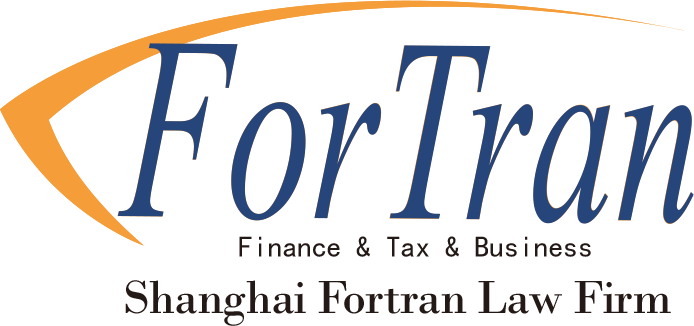Recently, I encountered a legal inquiry regarding the listing of companies on the garment certificate of conformity. A group’s Dalian branch applied for trademark X, established a new clothing brand, and commissioned a factory in Qingdao for production. Meanwhile, the group also set up a company in Shanghai to manage the online sales of garments. To create a premium and sophisticated brand image, the company inquired whether it would be permissible to list only the Shanghai company as the distributor on the garment certificate of conformity, without indicating the Dalian branch or the Qingdao factory. To address this legal question, I conducted relevant research, and this article will provide a brief analysis and discussion of the issue.
By Lawrence Sun
Recently, I encountered a legal inquiry regarding the listing of companies on the garment certificate of conformity. A group’s Dalian branch applied for trademark X, established a new clothing brand, and commissioned a factory in Qingdao for production. Meanwhile, the group also set up a company in Shanghai to manage the online sales of garments. To create a premium and sophisticated brand image, the company inquired whether it would be permissible to list only the Shanghai company as the distributor on the garment certificate of conformity, without indicating the Dalian branch or the Qingdao factory. To address this legal question, I conducted relevant research, and this article will provide a brief analysis and discussion of the issue.
1.Legal Provisions
Article 27, Paragraph 1 of the Product Quality Law of the People's Republic of China (2018 Amendment) (hereinafter referred to as the Product Quality Law) stipulates that the labeling on a product or its packaging must be truthful and comply with the following requirements:
(1)There must be a certificate of product quality inspection compliance;
(2)The product name, as well as the name and address of the producer, must be clearly marked in Chinese;
(3)Depending on the product's characteristics and usage requirements, the product specifications, grade, as well as the names and content of key ingredients, must be marked in Chinese; any information that consumers need to be aware of in advance must be indicated on the outer packaging or provided in advance through other materials;
(4)Products with a limited shelf life must clearly indicate the production date and safety usage period or expiration date in a prominent position;
(5)Products that can be damaged or may pose a safety risk to personal or property safety due to improper use, must carry a warning label or a Chinese-language warning statement.
Article 54 of the Product Quality Law provides that if the labeling of the product does not comply with the requirements set forth in Article 27, the authorities shall order correction. For products with packaging, if the labeling fails to comply with the provisions of Paragraphs (4) and (5) of Article 27, and the violation is serious, the authorities may order the cessation of production and sale and impose a fine of up to 30% of the value of the illegally produced or sold products. If there are illegal profits, these profits will be confiscated.
2. Legal Analysis
First, with respect to the interpretation of "producer" as stated in Article 27, Paragraph 1, Item 2 of the Product Quality Law, there are two prevailing views regarding whether it refers to the actual manufacturer or the commissioning party:
The first view holds that the "producer" specifically refers to the entity engaged in actual production activities and therefore the certificate of conformity should not list a commercial enterprise without production capabilities.
The second view argues that the "producer" refers to the entity responsible for the product's quality, not necessarily limited to the entity performing the physical production. The reasons for this view are primarily based on the following two points:
(1)Article 9 of the Product Labeling Regulations issued by the State Administration for Technical Supervision in November 1997 (document no. 172 [1997]) stated that "the product label should include the name and address of the producer. The producer’s name and address should be those of a legally registered entity capable of assuming responsibility for product quality... In cases where the product is processed by a third party at the request of a commissioning party, and the third party is not responsible for sales, the name and address of the commissioning party should be listed on the product." However, this document was repealed on July 2, 2014, by the General Administration of Quality Supervision, Inspection and Quarantine in the Announcement on the Publication of Effective Normative Documents in Force and the Repeal of Certain Normative Documents (2014 No. 70).
(2)The Supreme People's Court's Reply Regarding Whether Victims in a Product Infringement Case Can File a Civil Lawsuit Against the Trademark Owners as Defendants (Amendment 2020, document no. 20 [2020]) stipulates that any enterprise or individual that displays its name, trademark, or other recognizable identifiers on a product, indicating it is the product’s manufacturer, is considered a "producer" under the Civil Code of the People's Republic of China and the Product Quality Law of the People's Republic of China.
In practice, some regional administrative authorities support the second viewpoint mentioned above. For example, in a case investigated by the Mo Cheng branch of the Changshu City Market Supervision Administration in Jiangsu Province (where a consumer requested a return, refund and compensation on the ground that the producer listed on the certificate of conformity was a commercial enterprise without manufacturing qualifications), the authority held that the company had truthfully marked its name, address, and contact details, thereby fulfilling its obligation to clearly indicate the producer's name and address. Furthermore, the company was able to provide the quality inspection report for the complained product, and no substantial infringement on the consumer's legal rights was found. Therefore, the company was not in violation of the law, and the claim for punitive compensation for the service recipient was not supported. The Taiyuan Market Supervision Administration in Shanxi Province also expressed agreement with this viewpoint.
Additionally, we can refer to another two regulations. Article 9 of the Cosmetic Labeling Management Regulations (Order No. 100 of the General Administration of Quality Supervision, Inspection and Quarantine of the People's Republic of China) states that “for cosmetics produced through commissioned manufacturing, if the commissioning enterprise holds the production license for the cosmetics being processed, it shall indicate the name and address of the commissioning enterprise, as well as the name of the commissioned enterprise, or may choose to only list the name and address of the commissioning enterprise. If the commissioning enterprise does not hold the production license for the processed cosmetics, the name and address of the commissioning enterprise, as well as the name of the commissioned enterprise must be listed." Article 8 of the Food Labeling Management Regulations (2009 Revision)" stipulates that for food products produced through commissioned manufacturing, where the commissioned enterprise does not take responsibility for external sales, the name and address of the commissioning enterprise must be indicated. For food products under production license management, if the commissioning enterprise holds the relevant production license for the processed food, it shall list the name and address of the commissioning enterprise and the name of the commissioned enterprise, or may choose to only list the name and address of the commissioning enterprise." In both two regulations mentioned above, when the commissioning enterprise holds the production license for the product being processed, listing the name of the commissioned enterprise is optional in addition to the required listing of the commissioning enterprise’s name and address.
Finally, I made a phone inquiry to the relevant department of the Market Supervision Administration of Pudong New District, Shanghai. The staff informed us that both the actual manufacturer and the commissioning enterprise should be listed on the garment certificate of conformity.
Returning to the client’s inquiry, the Dalian company, as the commissioning party, must be listed on the certificate of conformity. The Shanghai company, being neither the actual manufacturer nor the commissioning party, should not be listed on the certificate. Should the group wish to list the Shanghai company on the certificate of conformity without indicating the Dalian company or the Qingdao factory, it may transfer the brand to the Shanghai company and have the Shanghai company commission the Qingdao factory for production. In such a case, listing only the Shanghai company on the certificate of conformity may be permissible.





